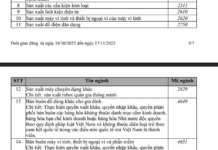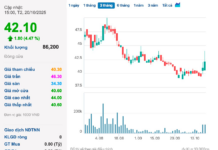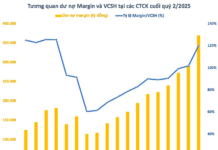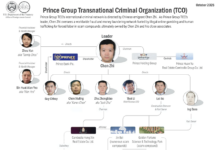World gold prices fell sharply after the US Department of Labor released a better-than-expected job report for January. This data point pushed back the timing of the Federal Reserve’s first interest rate cut. The domestic gold price today (February 3) also declined but maintained a level of 78 million VND/tael and continued to be higher than the international gold price converted at approximately 18 million VND/tael.
At nearly 2 pm, Phu Quy Group listed SJC gold prices for the Hanoi market at 75.7 million VND/tael (buying) and 78.15 million VND/tael (selling). Compared to yesterday morning, SJC gold prices at this business decreased by 600,000 dong/tael on the buy side and 300,000 dong/tael on the selling side.
Phu Quy brand 999.9 pure gold rings at the same time have prices of 64.3 million VND/tael and 65.4 million VND/tael, corresponding to the buying and selling prices, decreasing 100,000 dong/tael on each price.
In the Ho Chi Minh City market, SJC Company quoted gold prices for gold bars of the same brand at 75.6 million VND/tael and 78.1 million VND/tael, respectively, decreasing 800,000 dong/tael and 500,000 dong/tael compared to yesterday morning.
On Friday’s session on the New York market, spot gold prices fell $14.5/oz, equivalent to a decrease of 0.7%, closing at $2,040.7/oz.
This price level is equivalent to about 60.2 million VND/tael if converted according to the USD selling rate at Vietcombank. Compared to yesterday morning, the converted international gold price has decreased by 600,000 dong/tael.
Compared to the converted international gold price, the retail price of SJC gold bars is currently higher by about 18 million VND/tael, while the price of gold rings is higher by about 5.2 million VND/tael.
The decline in global gold prices is due to pressure from the USD exchange rate and the increase in US treasury bond yields after the overall job report for January in the US was better than expected.
According to the report from the US Department of Labor, the non-farm sector of the world’s largest economy added 353,000 new jobs in January, far exceeding the forecasted figure of 185,000 new jobs in a survey by Dow Jones news agency. This figure reflects the resilience of the US economy, but good news is also bad news as it reinforces the possibility that the Federal Reserve (Fed) will maintain higher interest rates for longer. Concerns about higher interest rates are reflected in the increase in US bond yields after the release of the job report, with the yield of the 10-year term rising sharply by nearly 0.2 percentage points to 4.02%.

The Dollar Index, which measures the strength of the USD against a basket of 6 major currencies, increased nearly 0.9%, closing at nearly 104 points, from the level of over 101 points in the previous session. Throughout the week, this index increased by more than 0.5%.
The tightening labor market has reduced expectations of when the Fed can start cutting interest rates. According to data from the FedWatch Tool of the Chicago Mercantile Exchange, traders are betting with a 78% probability of the Fed cutting interest rates for the first time in May, compared to 92% before the job report was released. Many experts and investors have started to bet more on the possibility that the Fed will not begin lowering interest rates until June. The probability of the Fed cutting interest rates from March is now only about 30%.
Tai Wong, an independent precious metal analyst in New York, said that the decline in gold prices on Friday is not significant compared to the pressure from the job report. “But we probably need to wait and see if the price of gold will decrease further,” Wong said.
In the monetary policy meeting that ended on Wednesday this week, Fed Chairman Jerome Powell denied the possibility of the Fed starting to cut interest rates in March but expressed confidence that inflation is trending down towards the Fed’s 2% target.
“If the interest rate remains at the current level and the timing of the interest rate cut is still unclear, the potential for gold price increases will be limited,” said Joseph Cavatoni, strategist at the World Gold Council (WGC).
However, throughout this week, the world gold price increased by about $21/oz, equivalent to an increase of about 1%. The driving force behind the increase in the price of the precious metal is the geopolitical risk in the Middle East and the confidence of investors that the Fed will finally cut interest rates this year. The domestic gold price increased by about 1.5 million dong/tael this week, equivalent to an increase of about 2%.


































